Endoscopic spinal surgery
Degenerative diseases of the spine are among the most frequent conditions in modern society. A wide range of factors can result in damage arising from degenerative causes. The most common consequences are spinal disc herniations and in advanced stages, bony constrictions known as spinal canal stenoses.
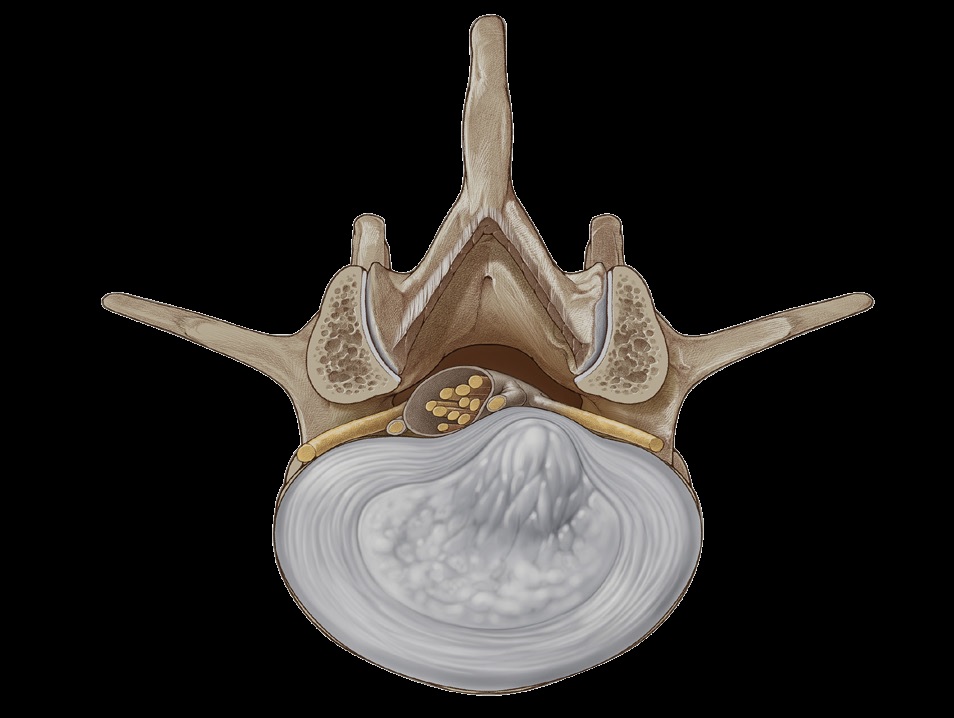
Spinal disc herniation and bony constrictions of the spinal canal
A spinal disc herniation involves a tear of the outer fiber ring. As a result, the gelatinous core penetrates the spinal canal and can exert pressure on the nerve. This results in the classic sciatic pain which radiates down the leg. The protruding spinal disc tissue is regarded as foreign material by the body and triggers an inflammatory response which attracts immune cells and leads to a gradual reabsorption of the spinal disc herniation. This process lasts approximately 6 - 12 weeks and there is approximately an 80 % chance of a cure. Since inflammation and pressure on the nerves results in pain, conservative therapy focuses on the elimination of pain in order to give the body time to resolve
the problem.
Surgical solution
A surgical intervention can quickly provide assistance in serious cases with high levels of pain and significant restriction of the musculoskeletal system. Full-endoscopic operation of the spine is the most patient-friendly procedure in which spinal disc herniations and bony constrictions can be removed while at the same time preserving tissue.
This procedure relieves the pressure acting on the nerves, halts the inflammatory response and brings the pain to an end.
Low-risk: Full-endoscopic operation
Even today, a spinal disc operation is not without risks. However, using the most advanced technologies means that the risks are significantly less than was previously the case. Particularly when the endoscope is used, the spinal disc operation represents a technique which quickly relieves the pressure on the compressed nerve, thus eliminating the cause of pain. Patients are already free of pain directly after the operation and can quickly
resume normal activity.
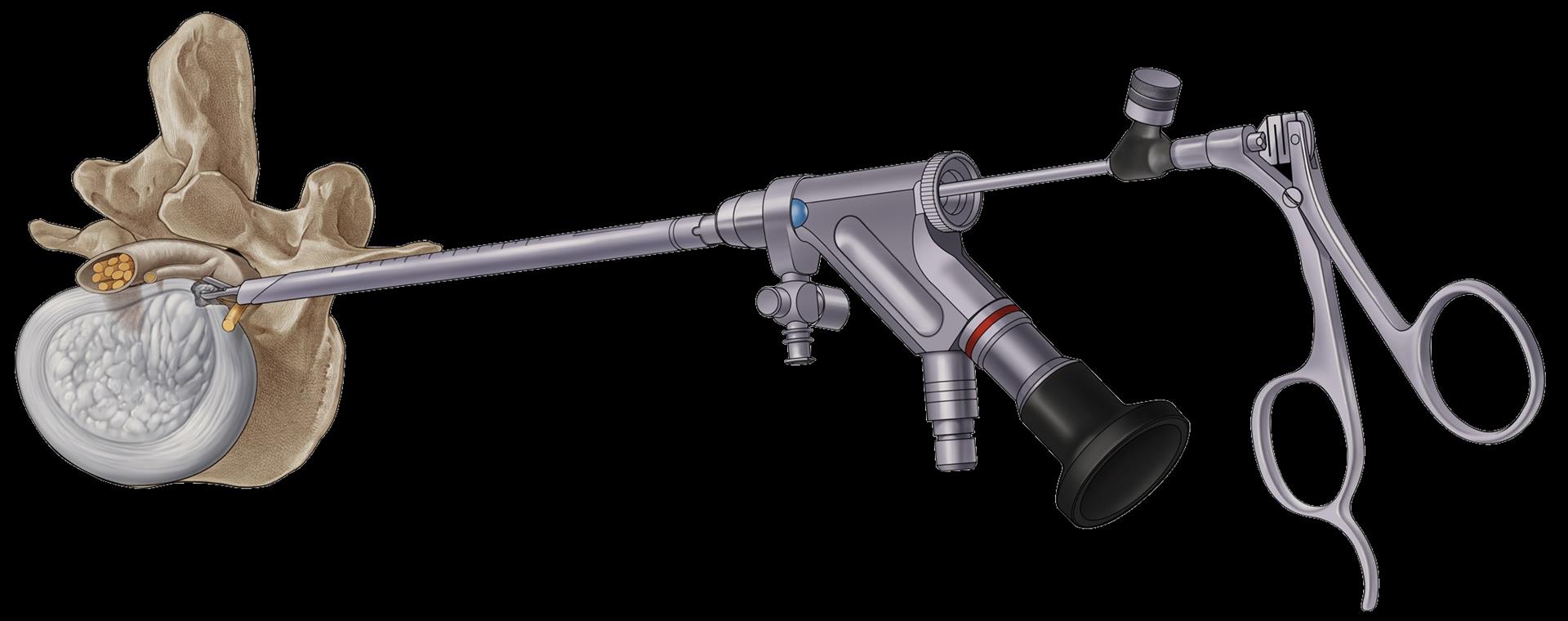
Technique of full-endoscopic operation
Full-endoscopic operation is an innovative surgical procedure in which the operation is carried out using an endoscope with a diameter of only 8 mm. Virtually all spinal disc herniations and most constrictions of the spinal canal can be removed endoscopically.
After the operation
During the first few weeks after a full-endoscopic surgery, a comfortable, adjustable corset can be worn. An individualised rehabilitation program is effective, especially in cases of muscle weakness. A return to normal activity is possible within approximately four to six weeks following the operation.
MRI scans
Before the operation:
Spinal disc tissue (dark in the image) is pressing on the nerve (light in the image).
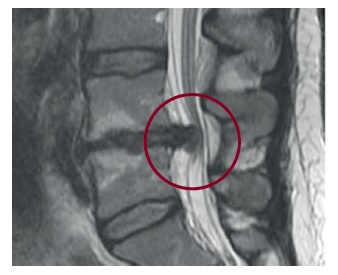
After the operation:
The protruding spinal disc tissue has been removed, the pressure on the nerve is relieved and the pain is retrieved.
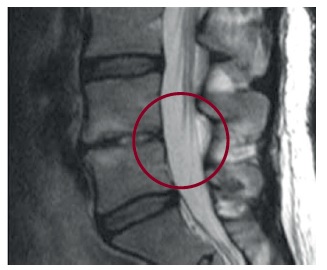
Endoscopic images
Before the operation:
The disc herniation (white tissue) presses on the nerve (pink-colored structure in the background) and causes pain.
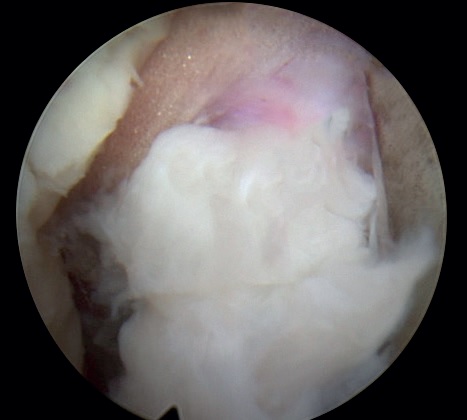
After the operation:
The disc herniation has been removed and the pressure on the nerve has been relieved and it is free from pain.
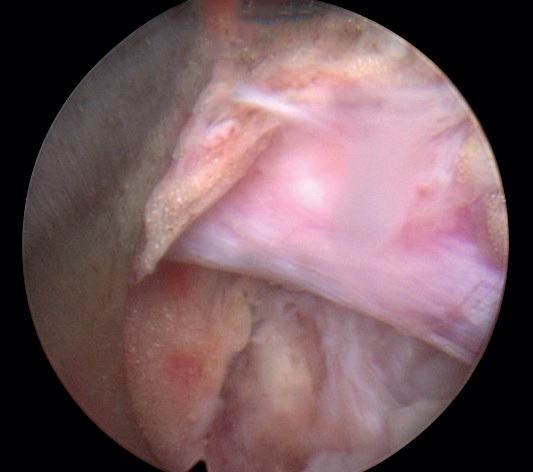
The full-endoscopic disc operation can relieve pressure on the nerve at an early stage and eliminate pain.
Advantages of full-endoscopic spine surgery
- Lower level of pain after the operation
- Minimized scar formation
- Maximized preservation of stabilizing structures (ligaments, muscles and bones)
- Fast rehabilitation and quick return to work and social life
Conclusion
Generally speaking, there are two possibilities for treatment of degenerative diseases of the spine. Conservative therapy and surgical intervention. The treatment must be based on individual circumstances and the requirements of the patient.
- Last Updated:26 April 2023
- Review Date:
- Author:Mr Narendra Rath
- Summary:
Endoscopic surgery is a surgical solution for spinal disorders caused by wear and tear degeneration